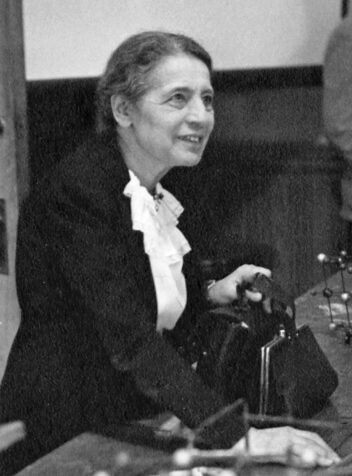The Great Railroad Revolution

The thunderous roar of steel wheels on iron tracks echoed across the American landscape during the most transformative period in the nation’s history. During the Gilded Age, American railroad mileage tripled between 1860 and 1880, and tripled again by 1920, opening new areas to commercial farming, creating a truly national marketplace and inspiring a boom in coal mining and steel production. Imagine this: a nation that had struggled with horse-drawn transportation suddenly found itself connected by ribbons of steel stretching from coast to coast.
These weren’t just modest improvements—they were revolutionary changes. Total rail mileage in the United States grew from 53,000 miles in 1870 to just under 200,000 miles at the turn of the century, with most of the new track being laid east of the Mississippi River in the nation’s industrial heartland. By 1880, the transcontinental railroad was transporting $50 million worth of freight each year. The railroad companies became the backbone of American industry, demanding unprecedented amounts of capital and spurring innovations in accounting and business management that would define modern corporate America.
Steel: The Foundation of Industrial Power

The first commercially available steel rails in the US were manufactured in 1867 at the Cambria Iron Works in Johnstown, Pennsylvania. Steel rails lasted over ten times longer than did iron, and with the falling cost of steel, heavier weight rails were used. This development marked the beginning of America’s dominance in the global steel industry. The nation’s abundant iron ore deposits, particularly in the Great Lakes region, combined with innovative production techniques to create an industrial powerhouse.
As production increased to match the overwhelming demand, the price of steel dropped by over 80 percent. When quality steel became cheaper and more readily available, other industries relied upon it more heavily as a key to their growth and development, including construction and, later, the automotive industry. As a result, the steel industry rapidly became the cornerstone of the American economy, remaining the primary indicator of industrial growth and stability through the end of World War II.
The Rise of Industrial Cities

American cities transformed at breathtaking speed, becoming magnets for millions seeking new opportunities. Between 1870 and 1920, almost 11 million Americans moved from farm to city, and another 25 million immigrants arrived from overseas. By 1920, for the first time in American history, the census revealed more people lived in cities than on farms. Picture the astonishing growth: America’s urban population increased sevenfold in the half century after the Civil War. Soon the United States had more large cities than any country in the world. The 1920 U.S. census revealed that, for the first time, a majority of Americans lived in urban areas.
Chicago exemplified this urban explosion, transforming from a modest frontier town into a industrial giant. In 1900, nearly 80 percent of Chicago’s population was either foreign-born or the children of foreign-born immigrants. The infrastructure required to support these burgeoning urban centers drove further industrial development, creating a cycle of growth that seemed unstoppable.
The Manufacturing Revolution

The scale of America’s manufacturing transformation defied belief. In 1880, when the agricultural frontier had largely disappeared, almost one-half of the American workers were still farmers and only one in seven workers (less than 15%) worked in manufacturing of any sort. Yet within a single generation, this balance shifted dramatically. Immigration, urbanization, and industrialization coincided to transform the face of American society from primarily rural to significantly urban. From 1880 to 1920, the number of industrial workers in the nation quadrupled from 2.5 million to over 10 million, while over the same period urban populations doubled, to reach one-half of the country’s total population.
The development of commercial electricity at the end of the 19th century allowed industries to take advantage of the labor supply in large cities. This technological breakthrough freed manufacturers from dependence on water-powered mills and enabled the concentration of industry in urban centers where workers were abundant.
America’s Global Industrial Dominance

The numbers speak for themselves about America’s meteoric rise to industrial supremacy. By 1913, the United States produced one-third of the world’s industrial output–more than the total of Great Britain, France, and Germany combined. This wasn’t just growth—it was complete domination of the global manufacturing landscape. By 1900 the United States had one half the world’s manufacturing capacity. At the end of the century, it had overtaken Great Britain both in iron and steel production and in coal production.
As its share of global manufacturing powered from 23% in 1870 to 36% in 1913, the admittedly high tariffs of the time came with a cost, estimated at around 0.5% of GDP in the mid-1870s. America had become the undisputed workshop of the world in less than fifty years.
The Oil Boom and Energy Revolution

Although there were many efforts in the mid-19th century to drill for oil, Edwin Drake’s 1859 well near Titusville, Pennsylvania, is considered the first “modern oil well”. Drake’s well touched off a major boom in oil production in the United States. This discovery unleashed forces that would reshape American society and create entirely new industries. Petroleum products revolutionized lighting, heating, and transportation, laying the groundwork for the automotive age.
John D. Rockefeller built an empire around this black gold, creating Standard Oil and establishing business practices that would define American corporate capitalism. Both were replaced by electricity for street lighting following the 1890s and for households during the 1920s. Gasoline was an unwanted byproduct of oil refining until automobiles were mass-produced after 1914, and gasoline shortages appeared during World War I.
The Immigration Workforce

The human engine driving America’s industrial boom came from around the world. Between 1870 and 1920, over twenty-five million immigrants arrived in the United States. By the turn of the twentieth century, new immigrant groups such as Italians, Poles, and Eastern European Jews made up a larger percentage of arrivals than the Irish and Germans. These weren’t just statistics—they were millions of individuals seeking better lives and bringing their labor, skills, and determination to American factories.
Industrial capitalism was the most important factor that drew immigrants to the United States between 1880 and 1920. Immigrant workers labored in large industrial complexes producing goods such as steel, textiles, and food products, replacing smaller and more local workshops. By 1890, immigrants and their children accounted for roughly 60 percent of the population in most large northern cities (and sometimes as high as 80 or 90 percent).
The Birth of Modern Commerce

The explosion of goods pouring from American factories required an entirely new system of distribution and sales. The enormous outpouring of goods from the nation’s factories had to be distributed and sold, mostly to domestic markets. Wholesale trade added almost 600,000 workers from 1880 to 1920, and retail trade grew by almost 2.4 million workers. One of every eight American workers in 1920 was employed in retail or wholesale trade—about one-half of the size of the manufacturing sector.
This commercial revolution transformed how Americans lived and consumed goods. Products that had once been handmade luxuries became mass-produced necessities available to ordinary families. The foundations of modern consumer culture were laid during this remarkable period of growth.
Agricultural Mechanization and Efficiency

Even as millions moved to cities, those remaining on farms experienced their own technological revolution. Even as America’s westward expansion allowed over 400 million acres (1,600,000 km2) of new land to be put under cultivation, between 1870 and 1910 the number of Americans involved in farming or farm labor dropped by a third. New farming techniques and agricultural mechanization facilitated both processes. The paradox was striking: fewer farmers were feeding more people more efficiently than ever before.
Cyrus McCormick’s reaper (invented in 1834) allowed farmers to quadruple their harvesting efficiency by replacing hand labor with a mechanical device. John Deere invented the steel plow in 1837, keeping the soil from sticking to the plow and making it easier to farm in the rich prairies of the Midwest. The harvester, self-binder, and combine allowed even greater efficiencies: wheat farmers in 1866 achieved an average yield of 9.9 bushels per acre but by 1898 yields had increased to 15.3 bushels per acre even as the total area had tripled.
The Electricity Revolution

Perhaps no innovation was more transformative than the harnessing of electrical power. Electricity would remain a novelty through the early to mid-19th century, but advances in battery storage, generating, and lighting would turn it into a domestic business. By the late 1870s and early 1880 central generating plants supplying power to arc lamps, first in Europe and then in the US, began spreading rapidly, replacing oil and gas for outdoor lighting, systems that ran on very high voltage (3,000–6,000 volt) direct current or alternating current.
In 1880, Thomas Edison developed and patented a system for indoor lighting that competed with gas lighting, based on a long-lasting high resistance incandescent light bulb that ran on relatively low voltage (110 volt) direct current. The abuse of holding companies, like trusts before it, led to the Public Utility Holding Company Act of 1935, but by 1920, electricity had surpassed petroleum-based lighting sources that had dominated the previous century.
Innovation and Patent Explosion

The period witnessed an unprecedented burst of creativity and invention. To understand the scope of this zeal for creation, consider the U.S. Patent Office, which, in 1790—its first decade of existence—recorded only 276 inventions. By 1860, the office had issued a total of 60,000 patents. But between 1860 and 1890, that number exploded to nearly 450,000, with another 235,000 in the last decade of the century.
This explosion of innovation wasn’t random—it reflected the systematic application of science and engineering to industrial problems. American inventors and entrepreneurs were solving practical challenges with unprecedented speed and scale, creating the technological foundation for modern industrial society.
The Corporate Revolution

The voracious appetite for capital of the great trunk railroads facilitated the consolidation of the nation’s financial market in Wall Street. By 1900, the process of economic concentration had extended into most branches of industry—a few large corporations, some organized as “trusts” (e.g. Standard Oil), dominated in steel, oil, sugar, meatpacking, and the manufacture of agriculture machinery. The first billion-dollar corporation was United States Steel, formed by financier J. P. Morgan in 1901, who purchased and consolidated steel firms built by Andrew Carnegie and others.
These weren’t merely large businesses—they were entirely new forms of economic organization that operated on scales previously unimaginable. The rise of these corporate giants created new challenges for government regulation and fundamentally altered the relationship between business and society.
Social Transformation and Living Standards

The living standards and the purchasing power of money increased rapidly, as new technologies played an ever-increasing role in the daily lives of working- and middle-class citizens. Yet the benefits weren’t equally distributed. Not everyone shared in the economic prosperity of this period. Many workers were typically unemployed at least part of the year, and their wages were relatively low when they did work.
Industrial growth transformed American society. It produced a new class of wealthy industrialists and a prosperous middle class. It also produced a vastly expanded blue collar working class. The industrial boom created both unprecedented wealth and new forms of inequality, setting up tensions that would define American politics for generations.
The industrial boom that launched modern America between 1870 and 1920 represents one of history’s most remarkable economic transformations. From a primarily agricultural nation, America emerged as the world’s leading industrial power, fundamentally reshaping how people lived, worked, and thought about their future. The railroad networks, steel mills, electrical power plants, and corporate structures built during this era didn’t just change America—they created the template for modern industrial civilization that would spread across the globe.




